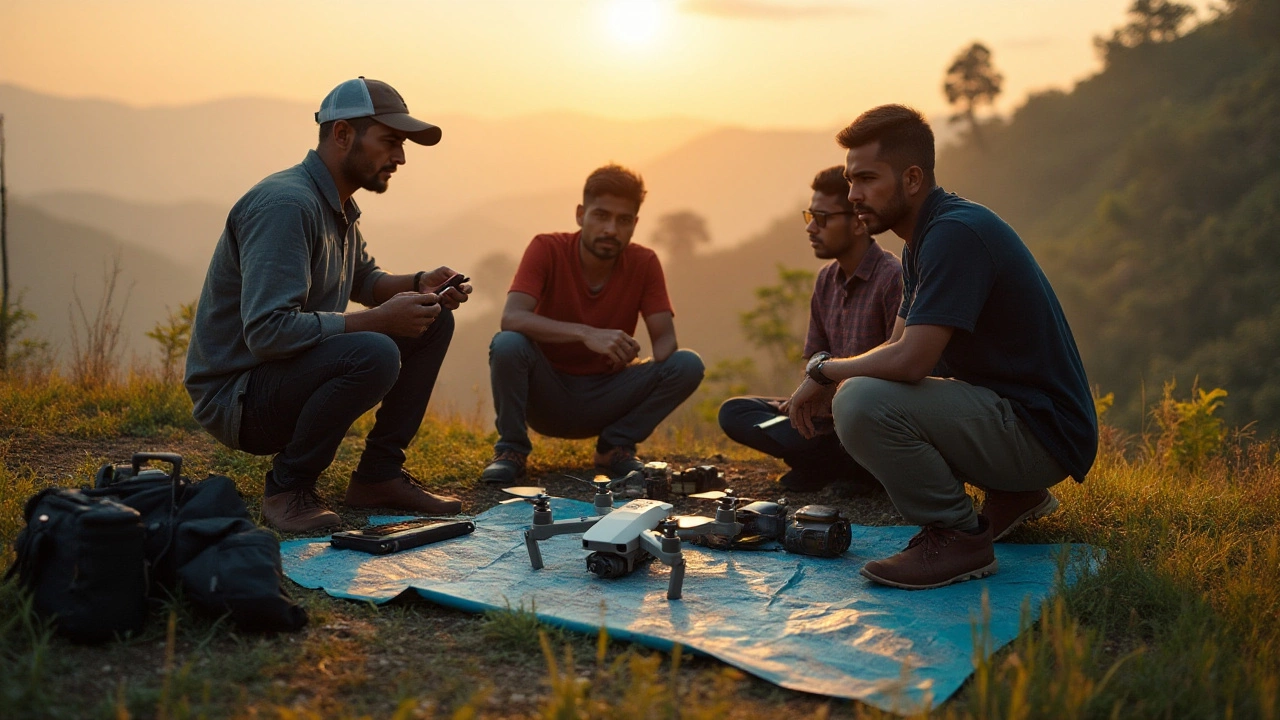Drone Detection: Quick Guide for Everyday Folks
Ever looked up and seen a buzzing drone hovering over your balcony and wondered if it’s a threat? You’re not alone. Drone detection is the process of spotting, identifying, and sometimes neutralizing drones that fly where they shouldn’t. In 2025 the technology is getting smarter, and knowing the basics can save you time, money, and a lot of headaches.
How Drone Detection Works
Most detection systems rely on one of three methods: radio‑frequency (RF) scanners, acoustic sensors, or visual cameras with AI. RF scanners listen for the control signals that pilots use, so they can tell when a drone is nearby and even guess its direction. Acoustic sensors pick up the distinctive whir of propellers, which works well in quieter neighborhoods. Visual AI cameras watch the sky, compare shapes to a database, and raise an alert the moment a drone is seen.
Many commercial solutions combine all three, giving a more reliable readout. For a homeowner, a simple RF detector that plugs into your phone can be enough to know when a drone is in range. The device will vibrate or flash, letting you decide what to do next.
Why You Should Care About Drone Detection
Besides the obvious privacy worries—like a drone capturing photos of your terrace—there are safety concerns. A drone that loses power can crash onto a car, a child, or a patio table. In industrial zones, an unauthorized drone could carry illicit items or interfere with crane operations.
India’s DGCA (Directorate General of Civil Aviation) tightened rules in 2025, requiring operators to register drones above 250 grams and to obtain a licence for certain zones. That means more drones are in the air, but also more accountability. However, illegal drones still fly, especially in crowded events or near sensitive locations. Knowing how to detect them helps you report the right details to authorities.
If you run a small business, a drone over your roof could attract unwanted attention or even be used for espionage. Simple detection tools give you evidence—time stamps, direction, and sometimes a photo—so you can file a proper complaint.
Here are three practical steps you can take right now:
- Get a basic RF detector. They cost under ₹2,000 and plug into a smartphone. Turn it on when you’re on a balcony or in a garden.
- Watch the sky. Drones usually have a distinct rectangular shape and spin quickly. If you see one, note its height and direction.
- Report it. Use the DGCA’s online portal or call the local police with the details. Provide the time, location, and any video or photo you captured.
While you wait for authorities, avoid confronting the pilot directly. Most hobbyists don’t realize they’re causing trouble, and a calm approach works better than a shout.
For bigger venues—concerts, fairs, or sports arenas—organizers often hire professional anti‑drone teams. These teams use high‑power RF jammers (legal only with special permits) or net‑launching drones to capture intruders safely. If you’re planning an event, budgeting for an anti‑drone service is becoming a standard safety line item.
In short, drone detection isn’t just a tech buzzword; it’s a practical skill that protects privacy and safety. With a cheap detector, a sharp eye, and a quick report, you can keep your space drone‑free without breaking the bank.
Stay aware, stay safe, and remember that the sky isn’t the limit—it’s just a new playground for us to watch over.
